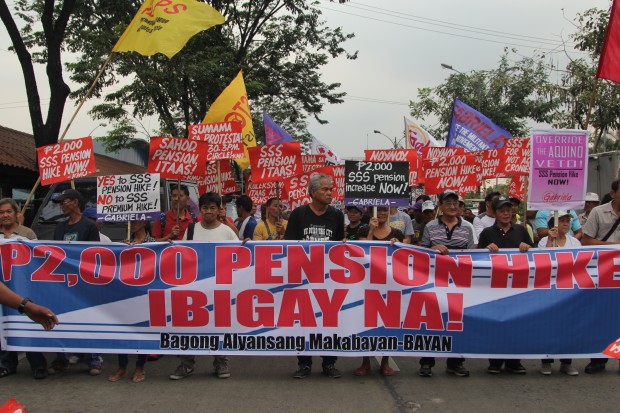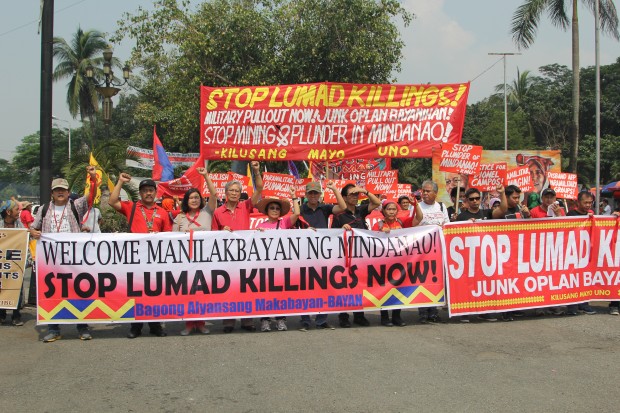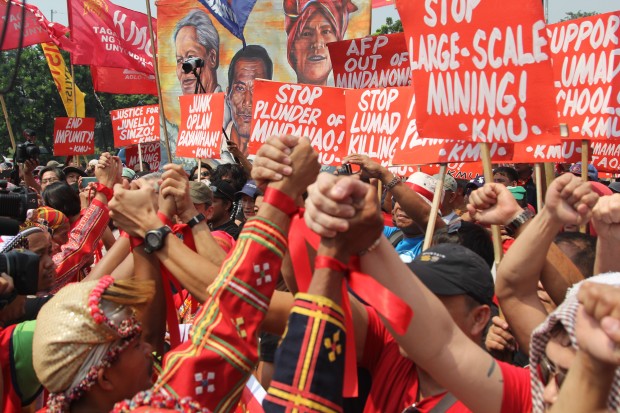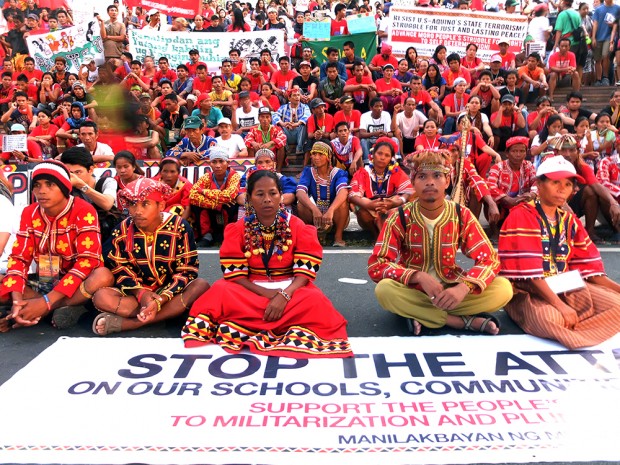STREETWISE: Remembering EDSA “People Power” by Carol Pagaduan-Araullo
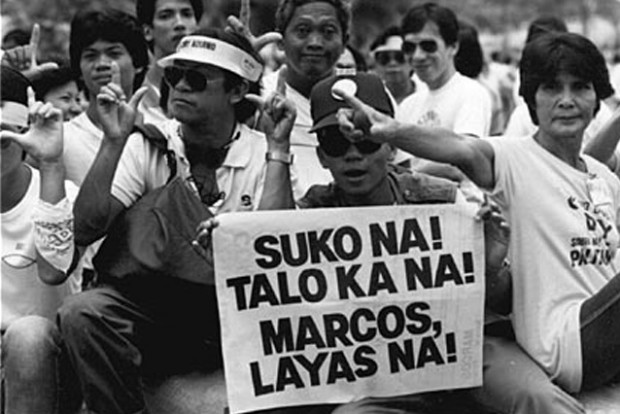
(Photo from www.philstar.com and owned by Gerardo Joaquin Sinco)
Streetwise
“Those who cannot remember the past are condemned to repeat it.” – George Santayana
From February 22 to 25, the nation will be marking the thirtieth year of the people’s uprising that toppled the US-backed Marcos dictatorship dubbed EDSA “People Power”. Ironically, this event will take place even as Ferdinand “Bongbong” Marcos Jr, the son of the fascist dictator, attempts a spectacular return to Malacañang should he win as vice president in the coming May elections.
Indeed the Marcos dynasty is back with a vengeance.
The Marcoses have been able to hide and launder a substantial part of the billions that they plundered. They have leveraged the political patronage ladled by the dictator on the Ilocos region to reestablish their political bailiwick in the North. (Former First Lady Imelda and daughter Imee have managed to win congressional seats; the dictator’s namesake became governor and now senator giving up the gubernatorial post to his eldest sister.)
They have also cleverly reinvented themselves from social pariahs after their patriarch’s disgraceful fall from power to celebrities once more in high society’s exclusive circles.
How the political heirs of the dictator have achieved this comeback has also much to do with the way the historical judgement rendered by the “people power” uprising has been mangled beyond recognition over the past thirty years.
The ruling elite in Philippine society have presided over the continuing distortion of what EDSA People Power was all about, what were the forces that acted and for whose interests, and what was the eventual outcome. With succeeding regimes having failed to deliver on the promise of deep-going economic, social and political reforms, historical revisionism has become the order of the day.
The over-arching myth of EDSA “People Power” is its supposed restoration of democracy with the ouster of an authoritarian order. In truth only the trappings of elite or bourgeoise democracy were restored: a Congress in the grip of political dynasties; periodic elite-dominated electoral exercises; a judiciary captured by entrenched vested interests; and the mass media owned and controlled by the elite as well.
The ruling classes of big landlords, the comprador bourgeoisie and bureaucrat capitalists remain firmly in power. What took place was a mere changing of the guards with a different faction of the ruling classes taking power by riding on the wave of the anti-dictatorship movement.
There has been no genuine land reform. The Cory Aquino and all post-EDSA regimes have persisted in their blind submission to IMF-World Bank economic policy impositions such as honoring all debts of the Marcos regime; an export-oriented, import-dependent economic model antagonistic to national industrialization; trade liberalization, privatization and deregulation; wage freeze and other neoliberal economic policies that further entrench poverty, backwardness and inequality.
Subservience to US dictates with regard to US military bases and continuing US military presence in the country has defined all the US-backed regimes after Marcos.
US-designed and directed counterinsurgency (COIN) programs were serially implemented resulting in bloody human rights records for every regime that came to power. Peace negotiations with armed revolutionary movements were dovetailed and subsumed to the objectives of COIN programs.
Graft and corruption continued unabated with a different faction of the ruling classes controlling and benefitting from the loot-taking as they took turns occupying Malacañang Palace.
The restoration-of-democracy myth was coupled with the myth that EDSA People Power was a “peaceful revolution”. In truth, there was no revolution as there was no fundamental change of the political and social system to the satisfaction of the people.
What was EDSA “People Power” in actuality? First and foremost, it was an unarmed people’s uprising that brought down the hated Marcos dictatorship. It was marked by the spontaneous outpouring of the people into the streets demanding the ouster of Marcos.
But “people power” was passed off as merely the massing-up of people spontaneously responding to the call of Cardinal Sin to support the Enrile-Ramos mutinous forces. They had been galvanized by the experience of the fraud-ridden snap presidential elections that stole victory from Corazon Aquino.
The objective of the emphasis on the unorganized mass of people is to play down the role of people’s organizations that had initiated and sustained anti-dictatorship struggles throughout the dark years. The purpose, then and now, is to airbrush progressive and revolutionary forces from the historical account of the uprising itself.
EDSA “People Power” was even mystified as a “miracle of prayers“. This attempt at obscurantism was propagated by the same leaders of the Catholic Church who had given their imprimatur to martial rule and only belatedly espoused “critical collaboration” when the people’s resistance to its brutality and criminality grew and intensified.
Second, EDSA “People Power” was a stand-off between two armed camps, that of Marcos-Ver and Enrile-Ramos. The US and the anti-Marcos reactionaries as well as the organized progressive forces and the spontaneous masses occupied the gap between the two armed camps.
Violent confrontation between the two could break out any moment so it is misleading to describe it as a “peaceful” phenomenon. Only US intervention and the growing numbers of people on the EDSA highway fronting Camp Crame prevented the Marcos-Ver camp from aggressively attacking the Enrile-Ramos camp.
The role of the Enrile-RAM-engineered coup d’etat has also been overplayed. It actually failed but it triggered an open split in the Armed Forces of the Philippines (AFP) and Philippine Constabulary (the precursor of the Philippine National Police). Subsequently, the myth of a “reformed AFP” was peddled to cover up the AFP’s fascist character and the grave human rights violations by the leading personalities in RAM such as then Defense Secretary Juan Ponce Enrile and his aide, then Col. Greg “Gringo” Honasan.
In sum, EDSA “People Power” was the confluence of diametrically opposed forces — progressive and anti-progressive — against Marcos. Nonetheless the balance of power overwhelmingly favored the latter.
The US and the reactionary classes would determine the final outcome, the take-over by Corazon Aquino, a member of the ruling elite and a US marionette, as the chief executive officer of a political system dedicated to preserving and strengthening the status quo. #
Next week: The true legacy of EDSA People Power
Published by Business World
15 February 2016

